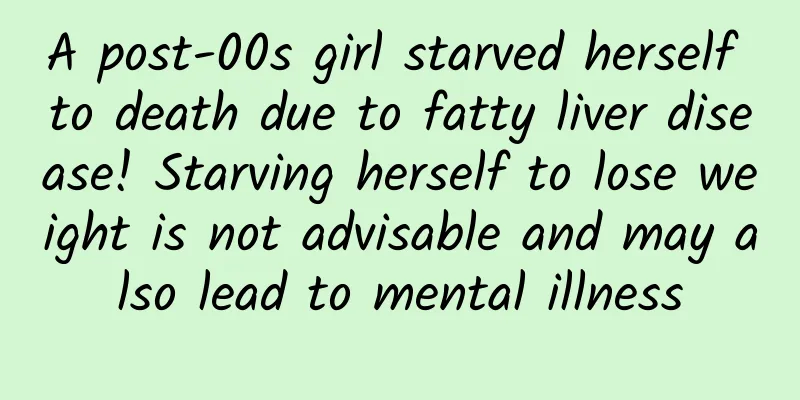From "medical inspirer" to "garbage terminator", earthworms are familiar yet unfamiliar to you

|
In spring, earthworms begin to stir. Speaking of earthworms, most people are familiar with them. However, earthworms are creatures that live underground, and most of the time they are out of human sight. To us, they are creatures that are both familiar and unfamiliar. 01 Big earthworms become spirits, small earthworms are like worms There are more than 5,400 species of earthworms in the world [1]. Small adults are no more than 1 centimeter long, while large ones can be more than 1 meter long, such as the Australian giant earthworm (Megascolides australis). Some individuals are even up to 3 meters long [2], which is much larger than the earthworm spirit encountered by Lai Junchuo in the Tang Dynasty novel "Xuanguailu" - this is an example of biodiversity beyond human imagination. The Australian earthworm is also known as the Gippsland earthworm (Source: bilibili screenshot) In biological classification, earthworms belong to the group called Oligochaeta within the phylum Annelida, usually referring to the terrestrial species within it. Like other annelids, earthworms have segmented bodies, and you can easily find this feature on their bodies. If you count them, most earthworms have 60-320 segments [3]. Close-up of earthworms (copyright image from the gallery, reprinting may cause copyright disputes) 02Earthworm nests and nightlife At night, earthworms that live on the surface of the soil or have burrows on the ground will come out to move around under cover of darkness. During the day, we rarely see them on the surface, and what we often see are piles of feces they excrete, which leads us to mistakenly believe that they only eat soil underground. In fact, earthworms can be roughly divided into two ecological types: saprophagous and geophagous . [4] The latter are pure geophagous. Earthworms that live in deep burrows will even drag fallen leaves and debris into their burrows and slowly eat them. Generally speaking, most earthworms are omnivorous and can eat most organic foods, but some species have preferences for food. For example, a study from a pasture in the Scottish Highlands showed that the earthworms (Lumbricus terrestris) living there preferred to choose the remains of bluegrass (Poa annua) as food [5]. For earthworms, the fresher the food, the more delicious it is . JE Satchell's research showed that fresh fallen leaves from oak, beech, larch and spruce are not popular with some earthworms, but after a period of weathering and microbial degradation, especially after the "unpleasant" substances such as phenolic compounds are decomposed, they become acceptable to earthworms [6]. Earthworms and tree roots from an underground perspective (copyrighted image from the gallery; reprinting may result in copyright disputes) 03Earthworms and the “Spell of Clone” The regenerative ability of earthworms has long been noticed by people. At least since the end of the 19th century, scientists have begun to cut earthworms under the guidance of scientific methods [7]. They cut various earthworms. Generally speaking, it is true that if you cut an earthworm into two parts, each part can grow a head and a tail. This "earthworm splitting technique" can be achieved for most species. However, the direction of cutting must be determined carefully, so that it should be cut into two parts, not two pieces... Moreover, not every operation can be successful. Some earthworms on the test bench actually died. If it can successfully complete the "clone" operation, the general process is as follows: First, the body segments at the wound will immediately embolize and close. Then, the protocells isolated in the body cavity will move to the wound surface and form a cell mass with the muscle to form a nodular regeneration bud. At the same time, cells produced by the division of the digestive tract, nerves, blood vessels and other tissues will enter the regeneration bud. The initial regeneration structure is thus formed [8]. Although the number of body segments of earthworms is basically determined during the larval stage, if the number of body segments removed is very small, they can still restore the original number of body segments, and the more body segments remaining, the greater the probability that the earthworm will survive and complete regeneration [9]. The next question is, since for most earthworms, regenerating the head and tail separately after a cut is possible, then if another cut is made, with an extra section of the head and tail removed, can the "multiple earthworm clones" be achieved? This depends on the regenerative ability of the earthworm. The regenerative ability of different earthworm species is very different. For example, after being cut, only the front section of the earthworm has a certain regenerative ability, and the back section is likely to fail, so it can be buried directly. According to experiments, the middle section of earthworms such as Eisenia foetida and Pheretima guillelmi can complete the regeneration of the head and tail [10][11]. The powerful regenerative ability of earthworms has also attracted the interest of researchers in the medical field. In some animal experiments, earthworm extracts have been shown to promote tissue regeneration and repair, indicating that they have potential for application in the medical field . However, some researchers have questioned the reliability of the conclusions, so there is still controversy [12]. 04Powerful earthworms Earthworms are important players in terrestrial ecosystems. They turn over the soil, decompose organic matter on the surface and in the soil, and accelerate the material cycle of the soil. They are important decomposers in the ecosystem and are also an animal group that influences multiple processes that determine soil fertility [13]. Soil pollution is very difficult for humans to detect, but soil organisms will be affected. Earthworms, which have a large biomass in the soil, are easily affected by toxic and harmful substances in the soil. Their species diversity, population density and distribution can all serve as environmental indicators . In addition, pollutants are also enriched in earthworms. Analysis of pollutants in earthworms can also serve as a basis for evaluating soil pollution [14]. Changes in their physiological indicators due to the environment can also serve as early warning and risk assessment of soil pollution. Earthworm farmers check the growth of earthworms (Source: Xinhua News Agency) Of course, earthworms are also used to treat waste, especially organic waste . They can accelerate the decomposition of waste and transform it in a beneficial direction. For example, a study from Nanjing mixed fruit peels, vegetable leaves and other waste from the vegetable market with sawdust and processed them through earthworm composting, which increased the biological activity of the compost, regulated the proportion of microorganisms, and made the compost more suitable for crop growth [15]. Research on the treatment of kitchen waste by earthworms has also shown considerable potential. Earthworms are breaking down a compost pile made of rotting kitchen vegetables, eggshells and tea bags (copyright image from the library, reprinting may cause copyright disputes) Earthworms are also considered to have positive significance in dealing with hazardous waste and heavy metal pollution. For example, the activities of earthworms can increase the dissolution rate of heavy metals in the soil , thereby improving the efficiency of plants in extracting heavy metals from the soil and speeding up the removal of heavy metals from the soil [16]. However, we must keep an eye on these earthworms that have swallowed a large amount of heavy metals and harmful substances, and do a good job of recycling them when necessary. Once they are allowed to escape, it will cause live pollution, and the harmful substances will spread to other places [17]. It should be noted that although earthworms seem to have strong power in ecological and environmental governance, they cannot be introduced blindly. A full safety assessment must be conducted on the earthworm species to be used. In fact, there have been many cases of alien earthworm species invading around the world, causing ecological problems, and earthworms living in the soil are particularly troublesome to remove. References: 【1】Misirlioğlu M, Reynolds JW, Stojanović M, ..., Brown GG. 2023. Earthworms (Clitellata, Megadrili) of the world: an updated checklist of valid species and families, with notes on their distribution. Z**ootaxa 5255, 417–438. 【2】Praagh BV. 1992. The biology and conservation of the giant gippsland earthworm Megascolides australis McCoy, 1878. Soil Biology and Biochemistry 24, 1363–1367. 【3】Huang Fuzhen. 1982. Earthworms. Beijing: Agricultural Press. 【4】Curry JP, Schmidt O. 2007. The feeding ecology of earthworms – A review. Pedobiologia 50, 463–477. 【5】Neilson R, Boag B. 2003. Feeding preferences of some earthworm species common to upland pastures in Scotland. Pedobiologia 47, 1–8. 【6】Satchell JE. 1967. Lumbricidae. In: Burges A, Raw F (Eds.). Soil Biology. London: Academic Press. 【7】Herlant-Meewis H. 1964. Regeneration in annelids. Advances in Morphogenesis 4, 155–215. 【8】Bai Guifen, Li Bing, Liu Pei. 2012. Research progress on earthworm regeneration and influencing factors. Journal of Chifeng University (Natural Science Edition), 28(5), 34–36. 【9】Xiao NW, Ge F, Clive A. 2011. EdwardsThe regeneration capacity of an earthworm, Eisenia fetida, in relation to the site of amplifier along the body. Acta Ecologica Sinica 31, 197–204. 【10】Qi Liping, Ge Feng, Zhou Xiaodong. 2002. Research on the regenerative ability of earthworms. Chinese Journal of Applied and Environmental Biology 8(3), 276–279. 【11】Gou Yingbo, Zhou Yang, Zhou Congshan. 2009. Research on the regeneration ability of Pheretima circumvallate. Journal of Changshu Institute of Technology (Natural Science Edition), 23(4), 65–68. 【12】Fana SE, Ahmadpour F, Rasouli HR, Maniati M. 2023. Earthworm as a peripheral nerve regeneration biomaterial: A comprehensive review. Traditional and Integrative Medicine 8,77–85. 【13】Zhang Weixin, Chen Dima, Zhao Cancan. 2007. The role of earthworms in ecosystems. Biodiversity Science, 15(2), 142–153. 【14】Yan Zengguang, He Qiaoli, Li Shengsheng. 2007. Application of earthworm ecotoxicology experiment in soil pollution risk assessment. Environmental Science Research 20(1), 134–142. 【15】Yang Wenxia, Li Huixin, Li Zhipeng, Jiao Jiaguo. 2013. Effects of earthworms on biological characteristics of mixed compost of fruit peels and vegetable leaves. Soil Bulletin 44(2), 363–368. 【16】Feng Fengling, Cheng Jiemin, Wang Dexia. 2006. Application prospects of earthworms in phytoremediation of heavy metal contaminated soils. Soil Bulletin 37(4), 809–814. 【17】William Rushger, Cullen Murphy, Zhou Wenping (translator), Lian Huixing (translator). 1999. The Trash Song. Beijing: China Social Sciences Press. Author: Ran Hao, Distinguished Researcher, Key Laboratory of Ecology and Environmental Protection of Rare and Endangered Plants and Animals, Ministry of Education (Guangxi Normal University) Produced by: Science Popularization China Produced by: China Science and Technology Press Co., Ltd., China Science and Technology Publishing House (Beijing) Digital Media Co., Ltd. |
>>: Spring is here. Do you know the top wild vegetables?
Recommend
China Passenger Car Association: In September 2022, the month-on-month trends of new energy vehicles and traditional fuel vehicles were significantly driven by policies
According to the new energy vehicle retail data o...
Amap and AutoX jointly launched driverless taxis, which are only tested in Shanghai and are equipped with safety personnel.
Recently, AutoNavi and driverless technology deve...
The crisis and turning point of BYD’s darkest hour from the suspension of Watma
On June 28, Watma announced that it would give all...
Global Economic Forum: Using GenAI to increase employment and improve labor productivity
Generative artificial intelligence (GenAI) has th...
“Moonquake”, is it an earthquake on the moon?
Have you heard of moonquakes ? When we look up at...
Meta withdraws! Apple Vision Pro sells so badly that Zuckerberg calls it quits: no more high-end hybrid headsets! Netizens: tech companies have no new jobs
Produced by | 51CTO Technology Stack (WeChat ID: ...
Qualcomm Snapdragon can run Win10. What does Microsoft want to do?
The yellow bell is broken and discarded, while the...
Can holding a washbasin prevent motion sickness? The real secret to preventing motion sickness during the Spring Festival travel rush is...
This year's Spring Festival travel season wil...
How much do you know about the information flow advertising routines of highly profitable products?
After reading this article, I hope you can improv...
What do you get if you draw a hexagon on the sea? This "national project" is extraordinary!
What do you get if you draw a hexagon on the sea?...
Bidding Promotion Tutorial: How to Systematically Analyze Competitors?
We often say: "Know yourself and know your e...
Let's go to the "Nor" of Xilin Gol Grassland, enjoy the "Ula" and see the "Taolegai" →
"Xilingol" means a river in a hilly are...
Office workers who make coffee or tea, you may have chosen the wrong time to wash the cups!
In our daily lives, there are many small habits t...
Action sci-fi movie "Ready Player One" HD 1080P with Chinese and English subtitles
The story takes place in 2045, and virtual realit...
Fold up the small table, open the sunshade...Why are there so many "strange" rules when flying?
Compared to taking a train or a car, taking a pla...









